Valley View Cedar Producer Builds Business in British Columbia
By Tony Kryzanowski, Wood-Mizer Contributing Author
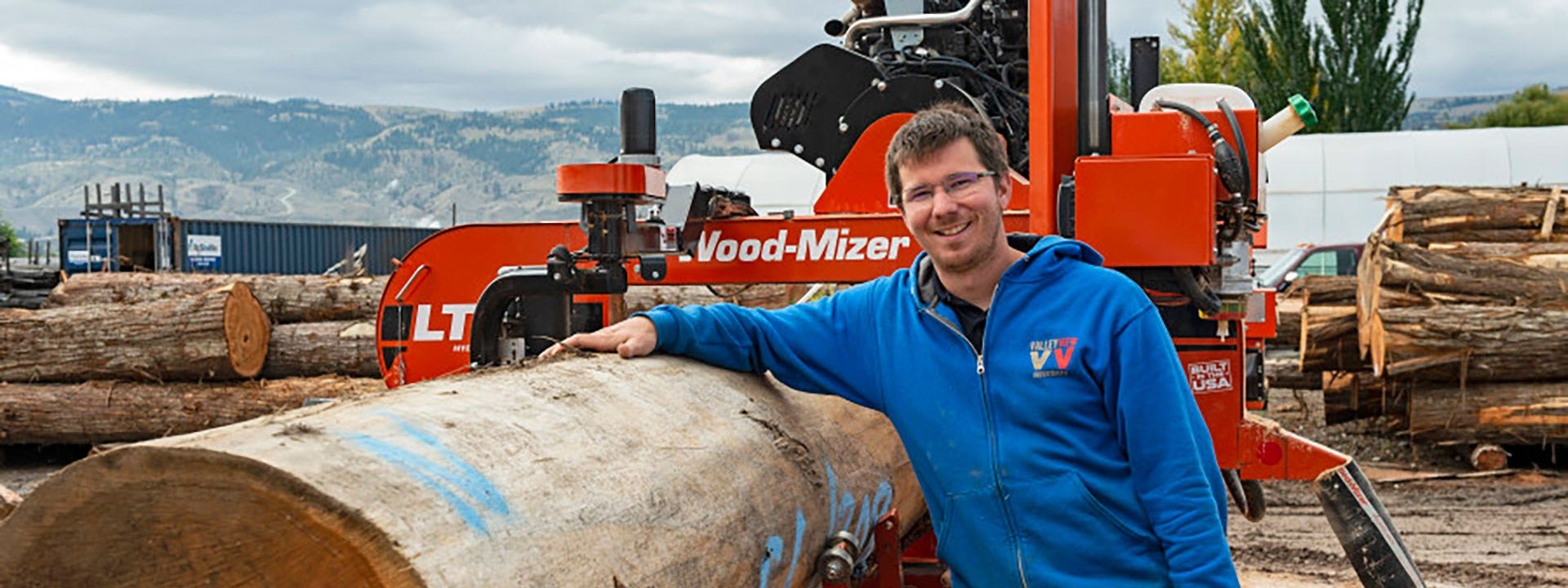
Photography by Kelly Funk
Cedar is a highly-valued building material for its appearance, durability, and pleasing aroma. Walk onto any freshly installed cedar deck or relax in a sauna, and its value is obvious. Valley View Industries is located in close proximity to western red cedar country on a two-acre site in Kamloops, British Columbia. It is leveraging both its location and extensive knowledge to supply high-quality cedar wood products throughout North America and Japan. The business also works with douglas fir, maple, and oak, but cedar is their bread and butter, representing about 85 percent of production.
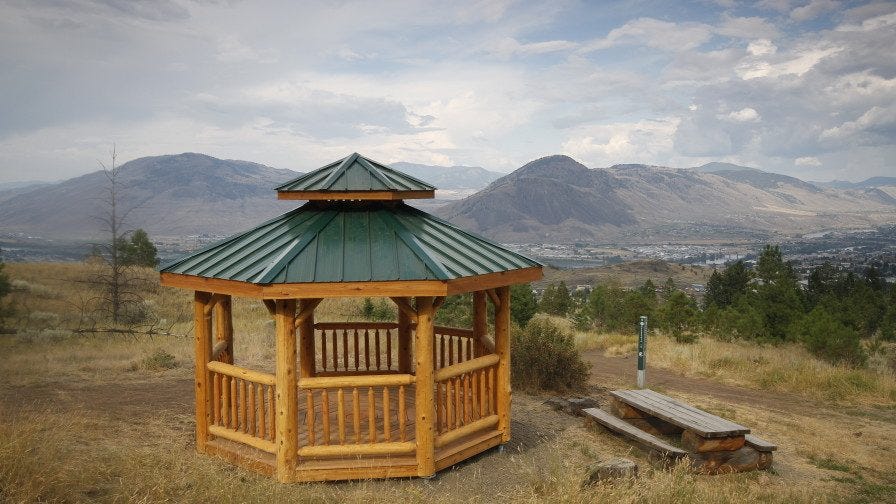
Producing a variety of cedar products
Both a building contractor and cedar wood product supplier, Valley View Industries’ building materials are manufactured either from raw logs or from rough lumber that they remanufacture into cedar fencing, decking and more refined lumber products. “Cedar is very good for its natural resistance to rot and decay,” says Nick Price, Valley View Industries owner.
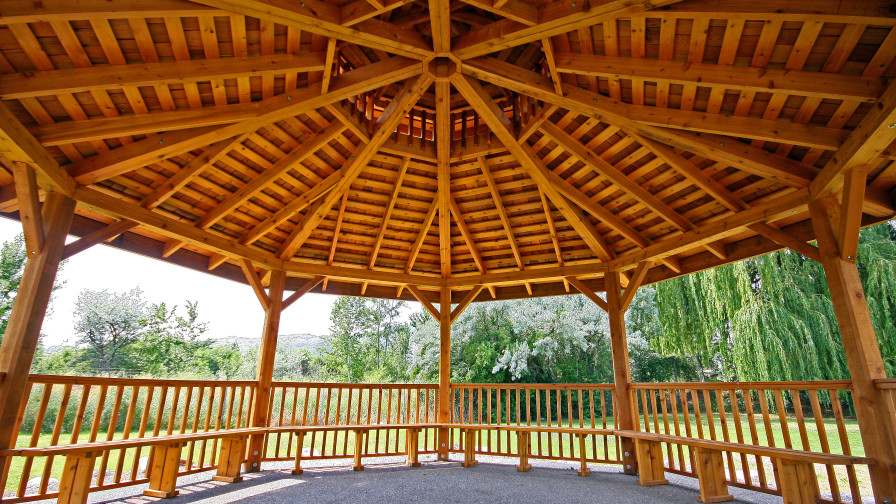
Nick is carrying on the family tradition started 30 years ago by his father, Norm, who founded the business. He is maintaining the company’s reputation for installing products like log gazebos, decks, hot tub enclosures, saunas, pergolas, sheds, cabins, fences, and more. About half of their business is custom cutting and installation while the other half is stockpiling popular cedar products for retail sales.
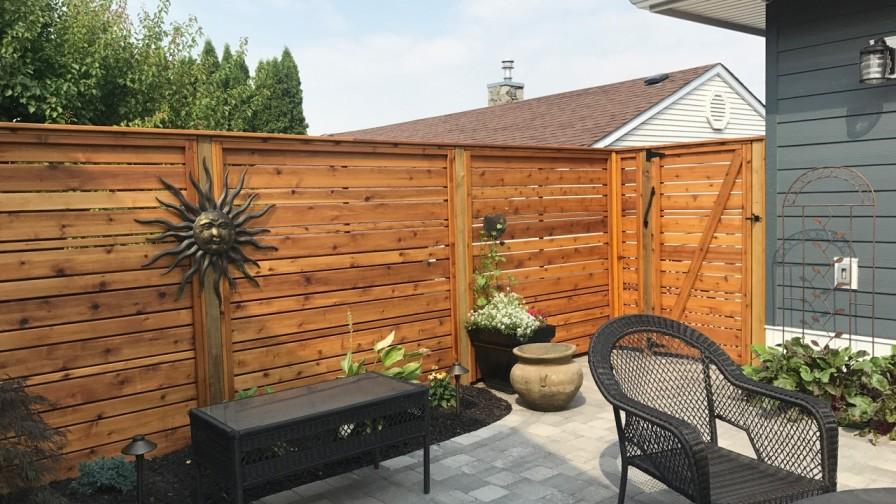
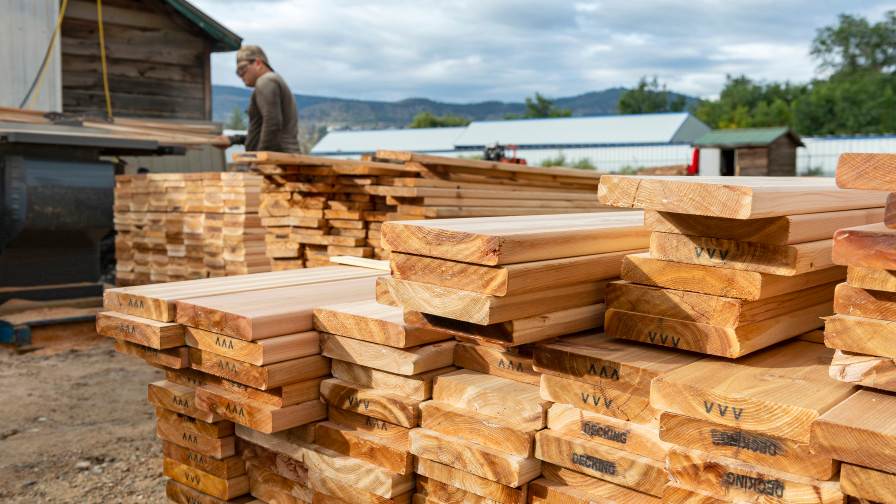
Wood-Mizer sawmill improves production and yield
Valley View Industries operates with several pieces of Wood-Mizer sawmill equipment, which gives them the capability of producing all of their own structural building components in-house. They now have control over both product quality and delivery. With their Wood-Mizer LT40 portable sawmill and supporting equipment, they have reduced delivery times of their building structures and building materials to customer sites by a month. Operating with 16 employees, which includes three installation crews, Valley View Industries generally offers installation within a couple hours of their location, but they have gone as far as Saskatchewan and the Yukon to satisfy client needs.

Nick says that he chose Wood-Mizer sawmilling equipment because the company has a good reputation. Prior to purchasing his Wood-Mizer, he used a smaller brand. “With our Wood-Mizer sawmill, we can cut in three or four hours what used to take us a week," Nick says. "It’s night and day. Even though we are so busy and we are booked for so many weeks ahead, we are still producing much quicker, at a higher volume and at a higher quality than we were previously. With its hydraulic capabilities and the price point, we just felt it was the way to go. We have been very happy with it.”
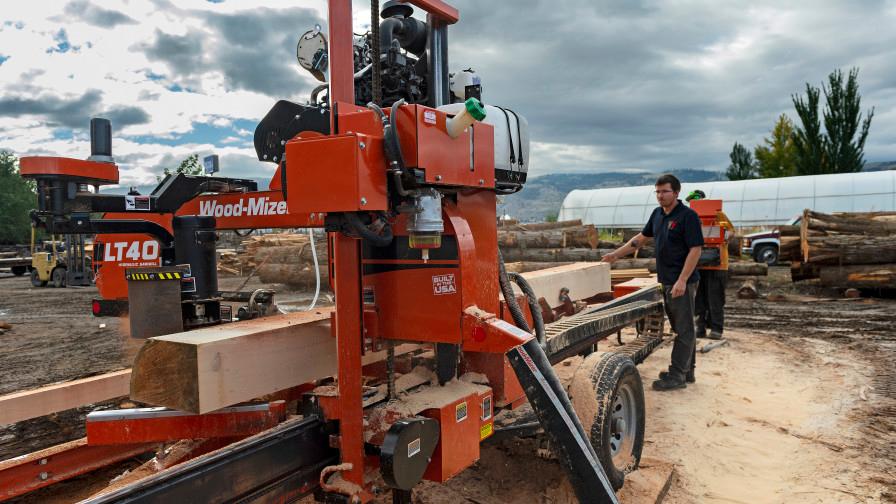
They have evolved from only producing about 15 percent of their product needs in-house to 100 percent, and there is also a lot less waste with their new operation. “Before with our old sawmill, we’d have really wavy cuts on some boards that we’d just have to reject,” Nick says. “We’d basically have to throw quality wood into the scrap pile. With the new mill, you know that you are going to get an accurate cut every time.”
The company selected the wide LT40 model which can saw logs up to 36” in diameter into 34" wide boards. The smallest diameter log they process has about a 12” top, but on average, they deal with logs that are about 24” diameter. The logs are shipped to the yard in 65’ lengths and then they are bucked by hand according to the company's needs. Most building material is manufactured from logs measuring 8’ to 16’. “We have the bed extension on the mill for longer material that allows us to go up to 26’ long,” says Nick.
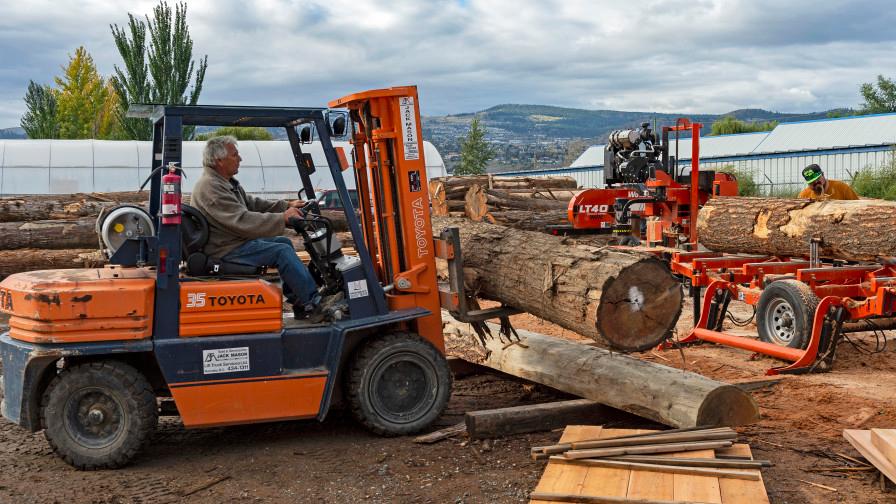
Support equipment grows business and product catalog
The sawmill is powered with a diesel engine and is equipped to hydraulically load, clamp, and turn logs on the sawmill bed. Nick says that leveling, clamping and rotating logs now takes seconds compared to several minutes with his old sawmill. The Accuset 2 setworks and Command Control systems on the mill manage sawing functions like automatically setting the blade location for specific cuts in 1/16” increments. “This is really a great feature for custom orders where a customer maybe wants a 7/16ths inch thickness,” says Nick. “We can just set the head and then knock out production.”
Nick’s sawmill also has the debarker, which Nick says is an essential component for his operation because cedar is notorious for accumulating rocks and mud around the base of the log. The debarker helps to extend saw blade sharpening intervals and lifespan. In terms of blade selection, he uses a standard, economy-grade, 1-1/2” blade for the first cuts to create a stack of cants. Then he will switch to a RazorTip blade for sawing the cants into final lumber products. “We find that by taking this approach, the blades last a bit longer and we get a nicer finish on our products,” says Nick.
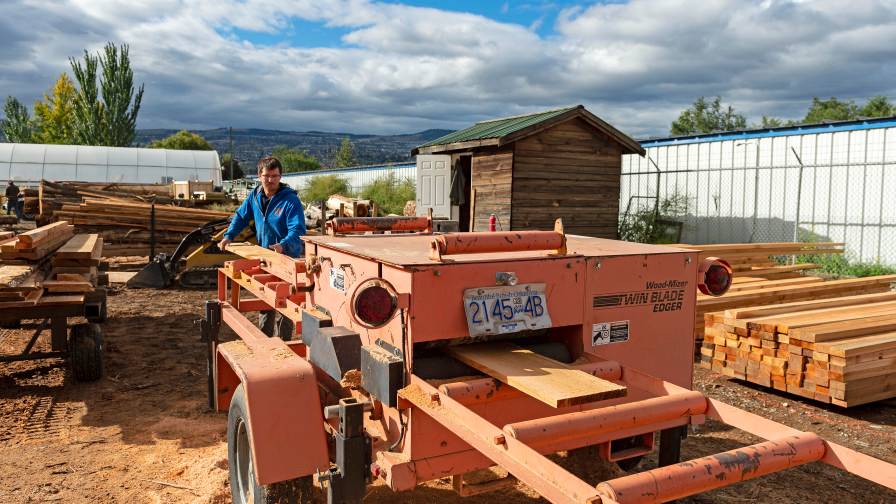
In addition to the LT40 sawmill, they also own a Wood-Mizer EG200 twin blade board edger to improve any boards that have wane or bark on the edges. “From our sawing and edging process, we create a stockpile of wood measuring anywhere from 1” X 4” lumber to 6” X 6” timbers,” says Nick. “From there, our employees, who are actually working on building projects, will pick out of those piles. So, if they are building, for example, a pergola, they will pick out all they need for that order, and then take the pieces into our shop for preparation.”
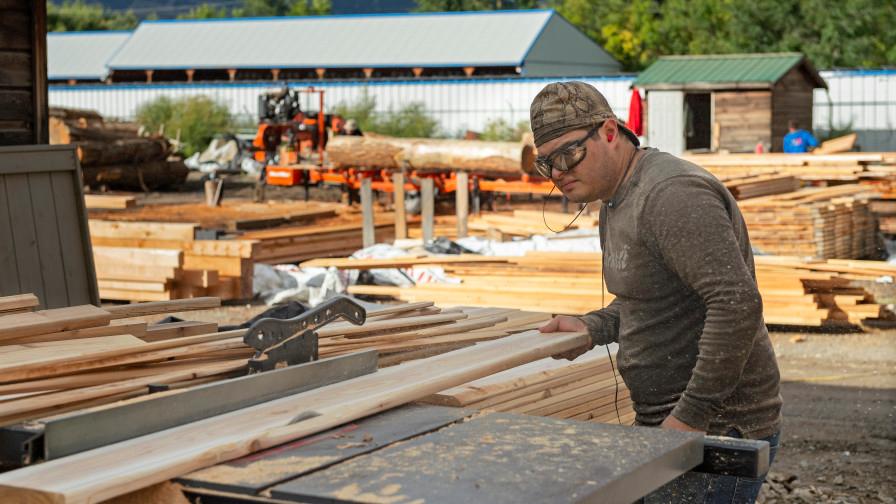
Producing cedar structures often involves more than simply producing dimensional lumber and timbers. Debarked and custom-tapered cedar logs are often part of a construction project and have great customer appeal as a retail product. So the company has invested in a Lathe-Mizer and tenon kit add-on for their mill. The lathe allows them to produce tapered and specially shaped cedar logs directly on the mill that can be fit together for either structural support or appearance applications. For example, the Lathe-Mizer can produce perfectly round, hexagon, octagon and triangle log shapes.
Fundamentally, Nick says that they have a variety of equipment they need from Wood-Mizer to carry on all aspects of the wood product side of their business to continue to operate efficiently and successfully.
Photography by Kelly Funk
Cedar is a highly-valued building material for its appearance, durability, and pleasing aroma. Walk onto any freshly installed cedar deck or relax in a sauna, and its value is obvious. Valley View Industries is located in close proximity to western red cedar country on a two-acre site in Kamloops, British Columbia. It is leveraging both its location and extensive knowledge to supply high-quality cedar wood products throughout North America and Japan. The business also works with douglas fir, maple, and oak, but cedar is their bread and butter, representing about 85 percent of production.


Producing a variety of cedar products
Both a building contractor and cedar wood product supplier, Valley View Industries’ building materials are manufactured either from raw logs or from rough lumber that they remanufacture into cedar fencing, decking and more refined lumber products. “Cedar is very good for its natural resistance to rot and decay,” says Nick Price, Valley View Industries owner.


Nick is carrying on the family tradition started 30 years ago by his father, Norm, who founded the business. He is maintaining the company’s reputation for installing products like log gazebos, decks, hot tub enclosures, saunas, pergolas, sheds, cabins, fences, and more. About half of their business is custom cutting and installation while the other half is stockpiling popular cedar products for retail sales.




Wood-Mizer sawmill improves production and yield
Valley View Industries operates with several pieces of Wood-Mizer sawmill equipment, which gives them the capability of producing all of their own structural building components in-house. They now have control over both product quality and delivery. With their Wood-Mizer LT40 portable sawmill and supporting equipment, they have reduced delivery times of their building structures and building materials to customer sites by a month. Operating with 16 employees, which includes three installation crews, Valley View Industries generally offers installation within a couple hours of their location, but they have gone as far as Saskatchewan and the Yukon to satisfy client needs.
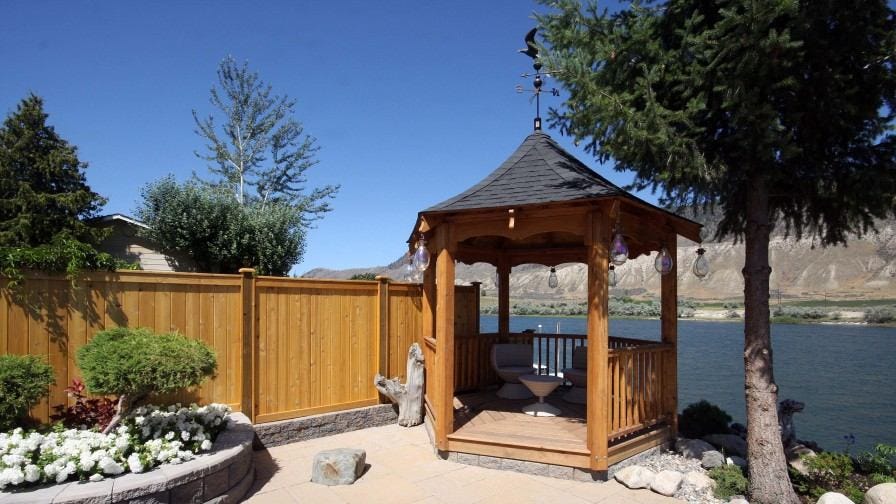

Nick says that he chose Wood-Mizer sawmilling equipment because the company has a good reputation. Prior to purchasing his Wood-Mizer, he used a smaller brand. “With our Wood-Mizer sawmill, we can cut in three or four hours what used to take us a week," Nick says. "It’s night and day. Even though we are so busy and we are booked for so many weeks ahead, we are still producing much quicker, at a higher volume and at a higher quality than we were previously. With its hydraulic capabilities and the price point, we just felt it was the way to go. We have been very happy with it.”


They have evolved from only producing about 15 percent of their product needs in-house to 100 percent, and there is also a lot less waste with their new operation. “Before with our old sawmill, we’d have really wavy cuts on some boards that we’d just have to reject,” Nick says. “We’d basically have to throw quality wood into the scrap pile. With the new mill, you know that you are going to get an accurate cut every time.”
The company selected the wide LT40 model which can saw logs up to 36” in diameter into 34" wide boards. The smallest diameter log they process has about a 12” top, but on average, they deal with logs that are about 24” diameter. The logs are shipped to the yard in 65’ lengths and then they are bucked by hand according to the company's needs. Most building material is manufactured from logs measuring 8’ to 16’. “We have the bed extension on the mill for longer material that allows us to go up to 26’ long,” says Nick.


Support equipment grows business and product catalog
The sawmill is powered with a diesel engine and is equipped to hydraulically load, clamp, and turn logs on the sawmill bed. Nick says that leveling, clamping and rotating logs now takes seconds compared to several minutes with his old sawmill. The Accuset 2 setworks and Command Control systems on the mill manage sawing functions like automatically setting the blade location for specific cuts in 1/16” increments. “This is really a great feature for custom orders where a customer maybe wants a 7/16ths inch thickness,” says Nick. “We can just set the head and then knock out production.”
Nick’s sawmill also has the debarker, which Nick says is an essential component for his operation because cedar is notorious for accumulating rocks and mud around the base of the log. The debarker helps to extend saw blade sharpening intervals and lifespan. In terms of blade selection, he uses a standard, economy-grade, 1-1/2” blade for the first cuts to create a stack of cants. Then he will switch to a RazorTip blade for sawing the cants into final lumber products. “We find that by taking this approach, the blades last a bit longer and we get a nicer finish on our products,” says Nick.


In addition to the LT40 sawmill, they also own a Wood-Mizer EG200 twin blade board edger to improve any boards that have wane or bark on the edges. “From our sawing and edging process, we create a stockpile of wood measuring anywhere from 1” X 4” lumber to 6” X 6” timbers,” says Nick. “From there, our employees, who are actually working on building projects, will pick out of those piles. So, if they are building, for example, a pergola, they will pick out all they need for that order, and then take the pieces into our shop for preparation.”


Producing cedar structures often involves more than simply producing dimensional lumber and timbers. Debarked and custom-tapered cedar logs are often part of a construction project and have great customer appeal as a retail product. So the company has invested in a Lathe-Mizer and tenon kit add-on for their mill. The lathe allows them to produce tapered and specially shaped cedar logs directly on the mill that can be fit together for either structural support or appearance applications. For example, the Lathe-Mizer can produce perfectly round, hexagon, octagon and triangle log shapes.
Fundamentally, Nick says that they have a variety of equipment they need from Wood-Mizer to carry on all aspects of the wood product side of their business to continue to operate efficiently and successfully.

